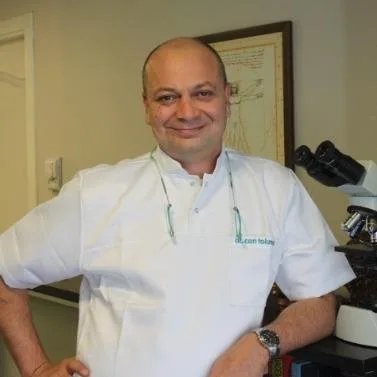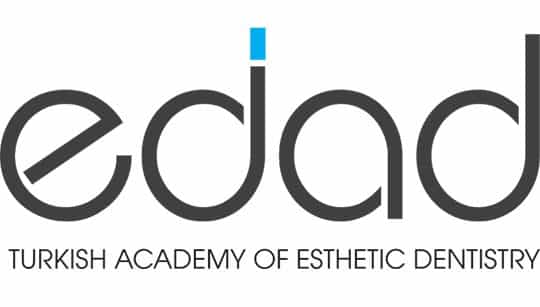Dental anomalies are deviations of dental tissue origin and therefore are derived from the dental tissues enamel, dentin, or cementum. Dental anomalies can be extreme variations or just slight deviations. They can be caused by a multitude of things or by just one small variation in the environment.
What is the most common dental anomaly?
Most common anomaly was rotation of teeth (18.80%), followed by hypodontia (10.90%), and least occurring was gemination, fusion, talon’s cusp, and dilacerations. 31.4% showed one dental anomaly, whereas 11.9% exhibited two or more dental anomalies.
How common are dental anomalies?
Dental anomalies are relatively common, with 36.7% to 40.3% of nonsyndromic patients presenting with at least one dental anomaly, depending on the population evaluated. Dental anomalies are caused by both genetic and environmental factors.
What are the symptoms of tooth disorders?
The symptoms can vary, depending on the problem. Some of the more common symptoms include:
- Abnormal color or shape of the tooth
- Tooth pain
- Worn-down teeth
Common Dental Problems
1. Tooth Decay
2. Gum Disease
3. Bad Breath
5. Cracked or Broken Teeth
6. Receding Gums
7. Root Infection
8. Enamel Erosion
9. Dry Mouth
10. Teeth Grinding
Some Dental Anomalies (Abnormalites)
Dental anomalies are caused by complex multifactorial interactions between genetic, epigenetic, and environmental factors during the long process of dental development. It explains this phenomenon, as different races carried different genetic coding which may include:
1. Tooth Gap
Tooth gaps are a common dental condition. They can be brought on by a variety of things, such as odd tooth spacing, missing teeth, or very small teeth.
Many people accept having a little gap between their front teeth and view it as a distinctive characteristic of their personality. Others, however, may find that a tooth gap negatively affects their smile and self-esteem.
Why tooth gap occurs?
While some gaps are due to natural causes including genetics, a narrow jaw, and small teeth. however, dental conditions including gum disease may also be at blame. If any gaps start to emerge or grow larger, it’s crucial to schedule an appointment with your dentist.
There are numerous reasons, including the following, that can cause tooth gaps:
- small or missing teeth
- a discrepancy between the size of the teeth and the jaw bone
- condition of the gums causing tooth displacement and drifting
- An exaggerated natural tongue push and an incorrect swallowing reflex
- Extra-large labial frenum
- missing teeth
- Behavioral patterns like thumb and lip sucking
Best treatment for diastema* or gaps in teeth
Dental bonding is one of the quickest, easiest and most effective way of fixing a gap between teeth. A dental bonding procedure can often be completed in a single dentist visit and involves addition of composite bonding restoring the perfect shape of your teeth.
*The term “diastema” describes the space or gap between the teeth. Although these gaps can develop anywhere in the mouth, they can occasionally be seen between the two top front teeth.
How to Cure a Teeth Gap
It is essential to have the dentist take a look at your teeth and determine what would be the best course of action for you if there is a lost tooth or if you are concerned about the gap between your teeth. Treatment options range from the following, depending on the circumstance and the cause of the tooth gap: Dental bonding, veneers, dental implants, dental bridges, braces.
2. Missing Teeth
Researchers estimate that as many as 20 percent of adults are born with at least one missing tooth (which can be also classified in dental anomalies), making hypodontia one of the most common developmental oral health conditions. Most individuals are missing only one or two permanent teeth, with very few missing more than six.
Undoubtedly, a missing tooth can alter the way you smile in a bad way. Beside that, a missing tooth can also lead to a number of issues, regardless of whether it was caused by gum disease, injury, severe tooth decay. No matter how a tooth is lost, if it isn’t replaced, it can have an adverse effect on your teeth’s alignment over time and lead to a host of issues. Your dental health and self-esteem may suffer even if you lose just one tooth.
Your speech, ability to chew food, the health of your jawbone, and the gradual shifting of your teeth into some of the vacant areas are all impacted by missing teeth. To restore your stunning smile, there are fortunately a variety of affordable solutions that offer complete functioning and a natural appearance for replacing missing teeth.
Too many people hesitate to discuss their alternatives with the dentist out of concern that doing so will be expensive. Despite the fact that every person’s budget is unique, there are many possibilities available, so it is much more probable that one will be suitable, including: Dental implants, implant-supported bridge, tooth-supported bridge, removable partial dentures, flipper (A temporary partial denture with the capacity to pivot around in place is referred to as a flipper. A flipper has no metal clasps and is not reliant on any neighboring teeth).
[Dentures]: Dentures are the most cost-effective tooth replacement option. This is so because they are the easiest to produce. There is no need for surgery or dental crown placement.Instead, an impression is taken of the mouth along with measurements. The dental lab will receive specific instructions on how to shape the denture and how the teeth should appear so that the dentures may be made.
3. Crowded Teeth
Crowded teeth happen when there is not enough space in the mouth for permanent teeth to grow in straight. This can also be called “overcrowding” or “dental crowding.”
People with this form of malocclusion (misalignment) have crooked teeth that overlap each other.
Untreated Dental Crowding Risk Factors
Straight teeth have advantages for your oral health as well as your appearance and self-esteem. Better dental hygiene results from having straight teeth since they are simpler to brush, floss between, and clean. Cavities and other oral infections are less likely to occur in people with straight teeth.
You are more prone to experience gum disease and tooth decay if you have moderate to severe crowding of your teeth. This is due to the fact that it is more challenging to regularly clean teeth that overlap.
Over time, problems with general health, such as heart disease and a weaker immune system, might result from poor dental hygiene (rare).
What happens if your teeth are crowded?
Over time, overcrowded teeth that have not been treated can lead to the development of gum disease. It can also lead to damage of the joints in the jaws. As you can see, the correction of crowded teeth now can help you avoid increased costs and risks down the road.
Crowded teeth are a common problem in both children and adults: 3 out of 4 children have incorrectly developing jaws. Treating this at a young age may result in less intervention later on in life.
What causes crowded teeth?
Denture space limitations are frequently the root of crowded teeth, but this is not always the case. The following are some of the most typical reasons of too many teeth:
- Lingual habits
- Because the teeth are bigger than the jaw, they don’t fit well.
- Narrow or ogival palate
- Supernumerary teeth
- The jaw being too small
- Missing or fractured teeth: the teeth do not stay aligned and shift position
4. Chipped/Crooked Teeth
There are multiple treatments available for teeth straightening and to fix crooked and misaligned teeth. They are as described below: Dental braces, retainers, dental veneers, dental crowns.
Is it OK to leave a cracked tooth?
A broken tooth shouldn’t be left untreated. Even if a broken tooth doesn’t hurt or isn’t bothering you, it can put you at risk for other more serious issues if not corrected quickly. One of the most bothersome risks of leaving a broken tooth alone is having food get stuck inside, which can cause acute infections
If you have chipped off just a small piece of tooth enamel, your dentist may repair the damage with a filling. If the repair is to a front tooth or can be seen when you smile, your dentist will likely use a procedure called bonding, which uses a tooth-colored composite resin.
Without professional treatment, the broken tooth is susceptible to an infection that will only get worse over time. This infection can move to the neck and head, causing all sorts of health problems.
What is the difference between a cracked tooth and a fractured tooth?
A fractured tooth, often called a cracked tooth or cracked tooth syndrome (CTS), is when a crack appears in your tooth. The crack can sometimes be small and harmless. Other times, it can cause your tooth to break or split. Tooth fractures are most common in children and older people, although anybody can crack a tooth.
The options for treating a cracked tooth depend on the severity of the crack, and are always treated by a professional. These include:
Tooth Bonding: A cracked tooth can sometimes be repaired with bonding, where a tooth-colored resin is used to repair or reshape a tooth.
Tooth Splint: If a tooth has become loose or displaced, your dental professional can bond the cracked tooth to the tooth next to it to help keep it stable while the surrounding bone and gum tissue recovers.
Root Canal: If the cracked tooth has damaged the tooth pulp, you may need a root canal to remove the damaged material, as well as a tooth crown, filling, or bonding, to repair the cracked tooth and prevent further damage.
5. Dental Shape Irregularities
Genetic and environmental factors can affect the development of teeth including the size and shape. Misshapen teeth may be isolated to one tooth or may occur as part of a widespread condition throughout the mouth. Common misshapen teeth include wisdom teeth, second premolars, and upper lateral incisors.
(Dental) Anomalies of shape include dens invaginatus (DI), talon cusp, dens evaginatus, gemination, fusion, root dilacerations, taurodontism, and concrescence. DI is an anomaly resulting from invagination in the surface of a tooth crown or rarely the root and which is lined by enamel and dentin.
Istanbul Dental Clinics Statement
Oral health professionals should be aware of the morphological variations and dental anomalies observed during routine dental evaluations. If unrecognized, such dental anomalies or abnormalities may impose treatment difficulties. Similarly, recognition of dental anomalies may give dentists an advantage while formulating a thorough and effective treatment plan.
For patients in need of dental surgery or treatment for dental anomalies, it is often wise to discuss the benefits and drawbacks of the treatment process with a dentist. Because the oral health is very specific to the patient, consulting a dentist is the best way. By taking into account the location of issue and the patient’s individual preferences, the dentist and patient can decide together on the right material to use.
At Istanbul Dental, with our qualified team we are ready to answer your additional questions, so do not hesitate to get in touch with us . Also, get a quote to start planning your dental treatment as whole process including your VIP transfer! While gathering information and inspecting the options about the dental services, we recommend you to visit our smile gallery and see our previous patients’ sincere smiles.













